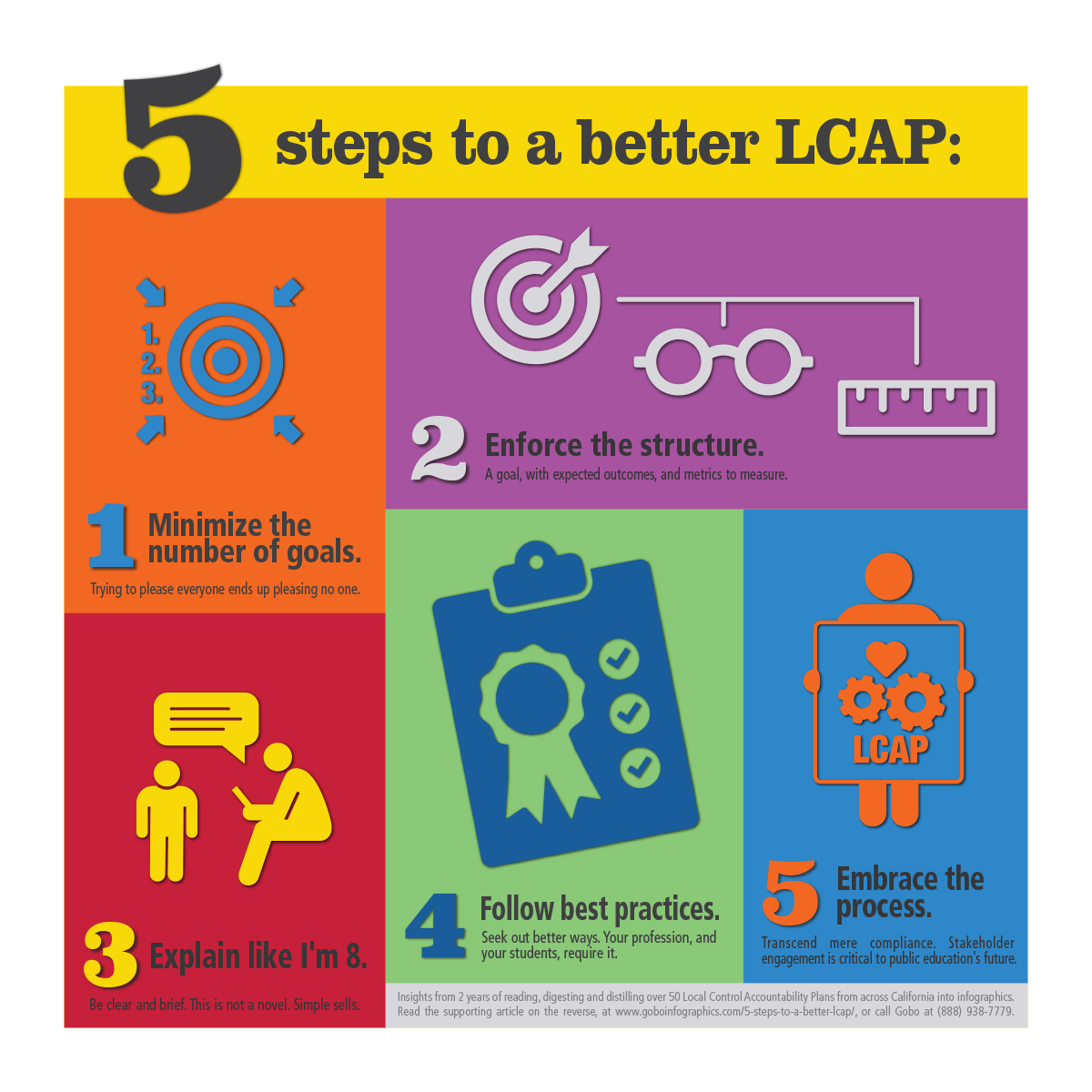 Research and common sense tell us: simple is better. As our world gets more crowded, complex, and noisy, with more media and devices competing for our attention, there is a growing imperative for accessibility and simplicity. This trend especially applies to California’s Local Control Accountability Plans (LCAP). Expecting stakeholders to wade through, let alone really comprehend, a 50, 100 or 300 page document is unrealistic. Mrs. Parent is probably not excited to read her District’s LCAP novel. And fellow educators can be even less enthusiastic. Our public education institutions have a responsibility to effectively inform and engage our stakeholders, otherwise we run the risk of alienating the people we serve, the people whose support we need to exist. Overwhelm and disengage stakeholders at your peril.
Research and common sense tell us: simple is better. As our world gets more crowded, complex, and noisy, with more media and devices competing for our attention, there is a growing imperative for accessibility and simplicity. This trend especially applies to California’s Local Control Accountability Plans (LCAP). Expecting stakeholders to wade through, let alone really comprehend, a 50, 100 or 300 page document is unrealistic. Mrs. Parent is probably not excited to read her District’s LCAP novel. And fellow educators can be even less enthusiastic. Our public education institutions have a responsibility to effectively inform and engage our stakeholders, otherwise we run the risk of alienating the people we serve, the people whose support we need to exist. Overwhelm and disengage stakeholders at your peril.
Creating an LCAP is a substantial task. And the resulting document, often impressive in size and scope, serves several important functions for a School District. But the significance of the document isn’t necessarily a function of its length, and in fact some of the best LCAPs we have seen are among the shortest. Here are some simple recommendations we have gathered from reading and digesting over 50 LCAPs from across the State:
1.) Minimize the number of goals. As the saying goes, “You can’t boil the ocean.” Focus on fewer goals to be more effective and to insure their successful completion. Whether you have 3 or 30 goals, you still have the same number of people and the same amount of money to accomplish them. Don’t dilute your efforts, and resist the temptation to increase goals in an effort to satisfy more people. When you try to please everyone, you end up pleasing no one. Three to 5 goals are best as research shows that higher quantities tax our limited attention span.
2.) Enforce the structure. A lot of effort went into creating and refining the LCAP’s structure, and for good reason. Any successful effort has these elements in common: a goal, with expected outcomes, and metrics to measure. More Districts than we care to admit fail to embrace this structure. Too many times we have seen outcomes with no metrics, goals that are really outcomes, and inconsistent metrics that defy any comparison. Make sure you understand what these elements really are, including them all, in every instance. Within each LCAP goal section, you should be able to answer these questions: What do we want to do? (Goal.) What will it look like when we’ve done it? (Outcomes.) How do we know how well we did it? (Metrics.) Missing elements adds to complexity, slows comprehension, and undermines trust. The clear alignment and connection between well-crafted goals, outcomes, and metrics provides a simple and reliable structure that speeds understanding.
3.) Explain like I’m 8. Write your LCAP so that even the elementary students in your district can understand it. Depending on your level of engagement, they may actually BE reading it. Some parent populations will also benefit from this simplicity, but the clarity achieved for all stakeholders is even more important. Education is filled with acronyms and jargon that are hurdles to understanding for laypeople. Explain or remove the edu-speak. Be clear and brief – this is not an essay. Simple sells.
4.) Follow best practices. While sometimes criticized, the State’s “evolve rather than prescribe” approach to LCAP development allows for a variety of LCAP breakthroughs that ultimately improve the way we educate California’s children. Many organizations continue to develop tools that help make your LCAP better. Seek them out, not only to improve your local process, but also to raise the collective LCAP bar. Your profession, and your students, require it. (The State Board of Education, notably, has identified infographics as a LCAP best practice. Just sayin’.)
5.) Embrace the process. If treated solely as a compliance exercise, the LCAP only wastes resources. But when embraced as an opportunity to discover and fulfill a community’s education needs, the LCAP becomes a powerful tool for change. A comprehensive LCAP process will tie District vision, community desire, and student needs into an actionable and measurable effort. It should not sit on the shelf, but instead be a living, guiding document regularly integrated into District activities. And any organization worth its salt not only plans its future, but recognizes the important role of the stakeholder. An emphasis on stakeholder engagement during the LCAP effort not only makes for a better plan, but has residual benefits of increasing resources and endearing taxpayers to the schools they pay for. Stakeholder engagement is critical to the future of public education.
—
Randall Putz is a twice-elected Bear Valley Unified School Board Trustee and creator of the original LCAP Infographic, which continues a commitment to help effectively educate our children and share the good work our public schools do.
Infographic & article in PDF format for sharing and printing:
